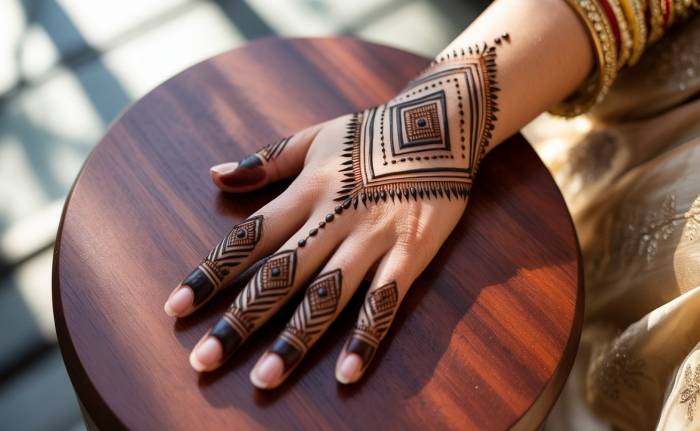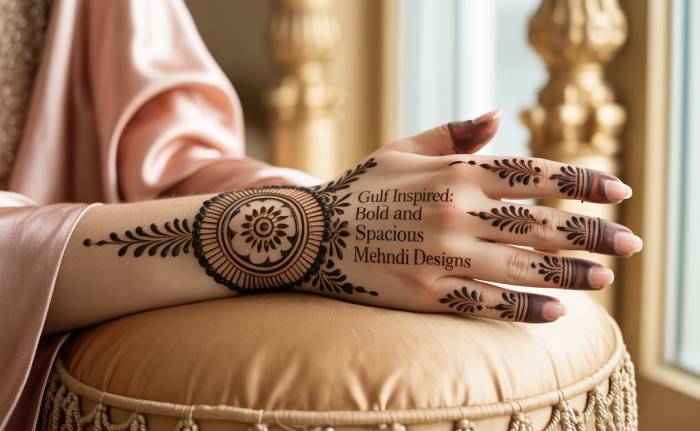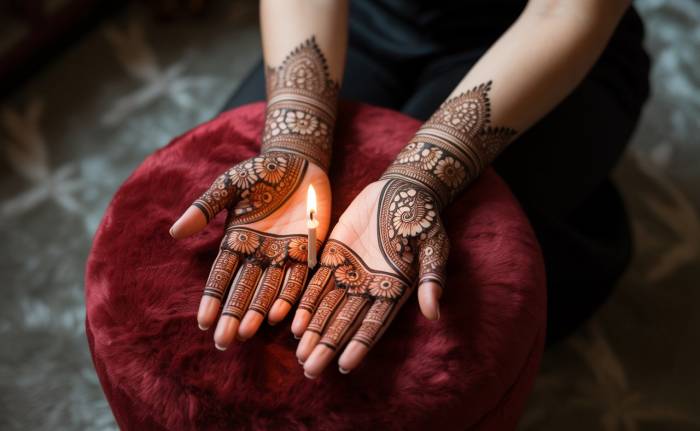Do you dream of beautiful henna on your hands? I’ve worked with mehndi art for over ten years. There’s nothing like seeing a design come alive on skin. This blog post shows the top 20 Arabic mehndi designs for hands for 2025. Are you a bride, going to a party, or just love henna?
I’ll show you many styles. These go from simple chic to grand art. I’ll describe each design. I’ll share its unique points and best uses.
| Design Style | Key Features | Best Occasion |
| Floral Trails | Flowing lines, large flower shapes | Weddings, Engagements |
| Leafy Vines | Thin leaves, linked vines | Festive Gatherings |
| Geometric Patterns | Strong shapes, balanced layouts | Modern Parties |
| Abstract Strokes | Unique, new henna art | Casual Events |
| Minimalist Elegance | Simple lines, small details | Daily Wear, Small Events |
| Traditional Arabic | Old shapes, detailed fills | Cultural Festivals |
Flowing Floral Trails: Embrace Nature’s Beauty
Flowing floral trails are always a good choice for Arabic mehndi designs for hands. These designs have soft, sweeping lines. They look like vines and branches. Clients often pick these for their graceful look.
They go across the back of the hand. Sometimes they reach the forearm. Empty spaces are key in these designs. I use this trick often. It makes the tiny details of flowers and vines stand out.
Delicate Leafy Vines: A Touch of Whimsical Charm
Do you like subtle elegance? Then delicate leafy vines are great Arabic mehndi designs for hands. These designs show off thin, winding vines. They have many small, detailed leaves. The overall look is light and airy. It’s not as dense as other patterns.
Arabic mehndi designs for with leafy vines are flexible. You can change them to fit your style. Some designs might add small flowers or thin curls. This makes them even more interesting. These patterns are perfect for parties, daytime events, or daily wear.
Bold Geometric Patterns: Modern and Edgy mehndi Designs

Want Arabic mehndi designs for hands that look modern and sharp? Bold geometric patterns are a top pick. These designs are different from old flower and vine shapes. They use clean lines, sharp corners, and balanced layouts. The result is a bold, new look.
Arabic mehndi designs for with geometric patterns can be simple or very complex. They can have basic lines and shapes. Or they can be intricate repeating designs. Common shapes are triangles, squares, circles, and diamonds. They are often repeated or mirrored. These designs are perfect for making a strong statement.
Abstract Strokes: Unleash Your Artistic Side
Do you want to show your unique style? Abstract strokes offer a fresh way to do Arabic mehndi designs for hands. These designs go beyond old patterns. They use free lines, unexpected curves, and new shapes. The main goal is artistic expression. It’s not about strict henna rules.
Arabic mehndi designs for with abstract strokes vary greatly. Each artist makes them unique. You might see strong, sweeping lines next to tiny, fine details. Or designs that use empty space to make interesting visuals. These designs are perfect for those who want to stand out.
Minimalist Elegance: Simple Yet Stunning
Sometimes, less is best. Minimalist elegance shines in some Arabic mehndi designs for hands. These designs are simple. They use clean lines, small details, and a “less is more” idea. From my work, clients often pick these.
| Design Element | Description | Suitability |
| Single-Line Trails | One continuous line makes simple patterns | Daily wear, quiet events |
| Small Motifs | Tiny flower or shape designs placed far apart | Casual, for simple tastes |
| Finger Focus | Designs mostly on one or two fingers | Modern, small details |
| Negative Space Art | Using empty areas to shape the design | New and cool looks |
| Bracelet-Style Bands | Simple bands around the wrist or fingers | Daily elegance, easy events |
Arabic mehndi designs for that are minimalist often have fine lines. These lines follow the hand or fingers. They may have small, well-placed designs. Or they can have simple geometric patterns.
Traditional Arabic: Classic and Timeless Patterns
These designs come from old cultures. They have classic, well-known patterns. They also have detailed fills and strong outlines. You’ll often see famous shapes like paisleys (also called mango shapes).
Traditional Arabic mehndi designs for often cover much of the hand. They create a rich, detailed picture of henna art. The way they are put on is also traditional. These designs are very popular for cultural parties, old-style weddings, and other big cultural events.
Gulf Inspired: Bold and Spacious mehndi Designs

Gulf-inspired Arabic mehndi designs for hands have a special and eye-catching look. These designs are known for their strong, clear outlines and open patterns. They often have big, striking flower or shape designs. They usually have less detailed filling than older Arabic mehndi designs for hands.
Arabic mehndi designs for in the Gulf style often use darker henna. This makes the designs look even bolder. Common shapes include big, styled flowers, clear geometric shapes, and vine-like trails. These trails are less crowded than old patterns.
Indo-Arabic Fusion: A Blend of Cultures
They add the fine details, delicate fills, and old Indian shapes. These include paisleys, peacocks, and flower grids.
Arabic mehndi designs for that mix these styles are very adaptable. They appeal to many different tastes. They allow for more creativity and personal touches. Artists can play with different mixes of patterns and ways to apply them. These designs are very popular for weddings and festive events.
White Mehndi Magic: A Contemporary Twist
For a new, non-traditional take on henna art, try the magic of white mehndi designs for hands. Unlike regular henna, which stains skin brown, white mehndi uses a cosmetic paste. These designs often look like regular mehndi patterns.
Arabic mehndi designs for done in white mehndi look stunning against the skin. They are great for events with certain color themes. or for those who like a more delicate, understated style.
Glitter and Gems: Adding Sparkle and Glamour
Just use glitter and gems. These additions can instantly make any henna pattern better. They are perfect for special events, celebrations, or whenever you want to look dazzling. You can put glitter over dry henna.
Also, you can place small sticky gems carefully within the Arabic mehndi design for . They will catch the light. They add sparkle and class. This allows for endless creative ideas. Do you want tiny hints of shine or lots of glitter and gems?
Backhand Beauty: Focusing on the Reverse
These patterns often have flowing lines, thin vines, fine details, or simple shapes. The back of the hand is nicely displayed.
They are more visible when you move your hands or talk. Or they can be more detailed designs. These might have flowers, shapes, or abstract strokes.
Feet Complement: Coordinated Hand and Foot Designs
For special events, especially weddings, many choose to extend beautiful Arabic mehndi designs from hands to feet. Matching hand and foot designs makes the overall look better. It shows a complete and balanced henna style.
When making matching Arabic mehndi designs for and feet, artists think about the whole theme. They also consider how detailed the designs should be. Some brides pick detailed designs.
Conclusion
In short, Arabic mehndi designs for hands in 2025 offer many great choices to improve your look. From classic patterns to new simple styles, there’s a perfect design for every event and taste. As someone who loves this art, I truly hope this guide has helped you. Explore the beauty of Arabic mehndi designs for hands.
FAQs
Can beginners draw Arabic mehndi designs for hands?
Yes! Arabic mehndi designs for hands are simple and ideal for beginners due to easy strokes and flowing shapes.
What are common shapes in Arabic mehndi designs for hands?
Arabic mehndi designs for hands often show leaves, vines, dots, and flower patterns that create graceful, clean looks.
Are Arabic mehndi designs for hands long-lasting?
Arabic mehndi designs for hands can last around 5–7 days if applied well and kept away from water during the first hours.

